RARE! WWII 1945 Original World War II “Headquarters of the Commander in Chief - U.S. Pacific Fleet” CONFIDENTIAL Operation Iceberg Okinawa Gunto Invasion Bulletin (Japanese Army and Navy Forces)
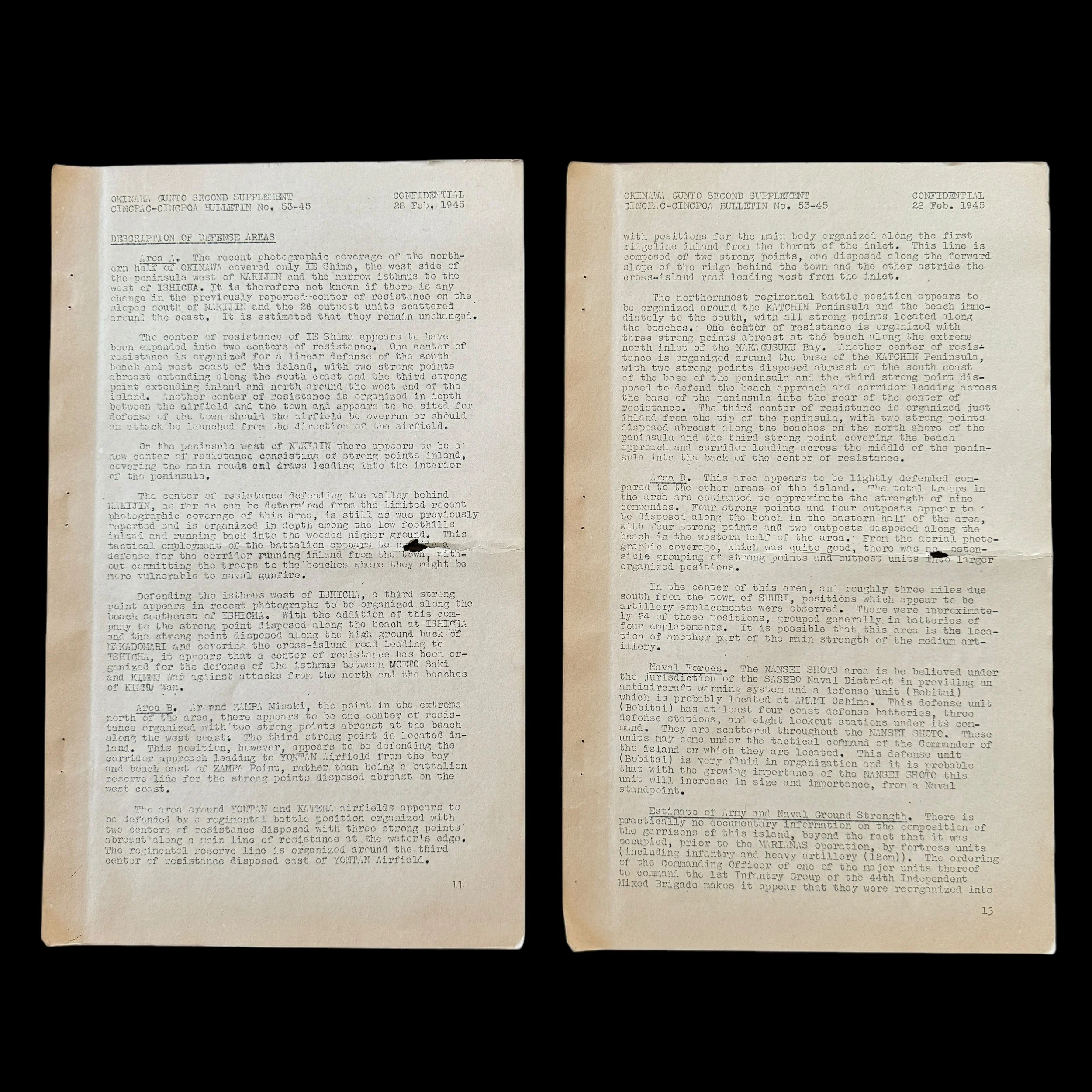









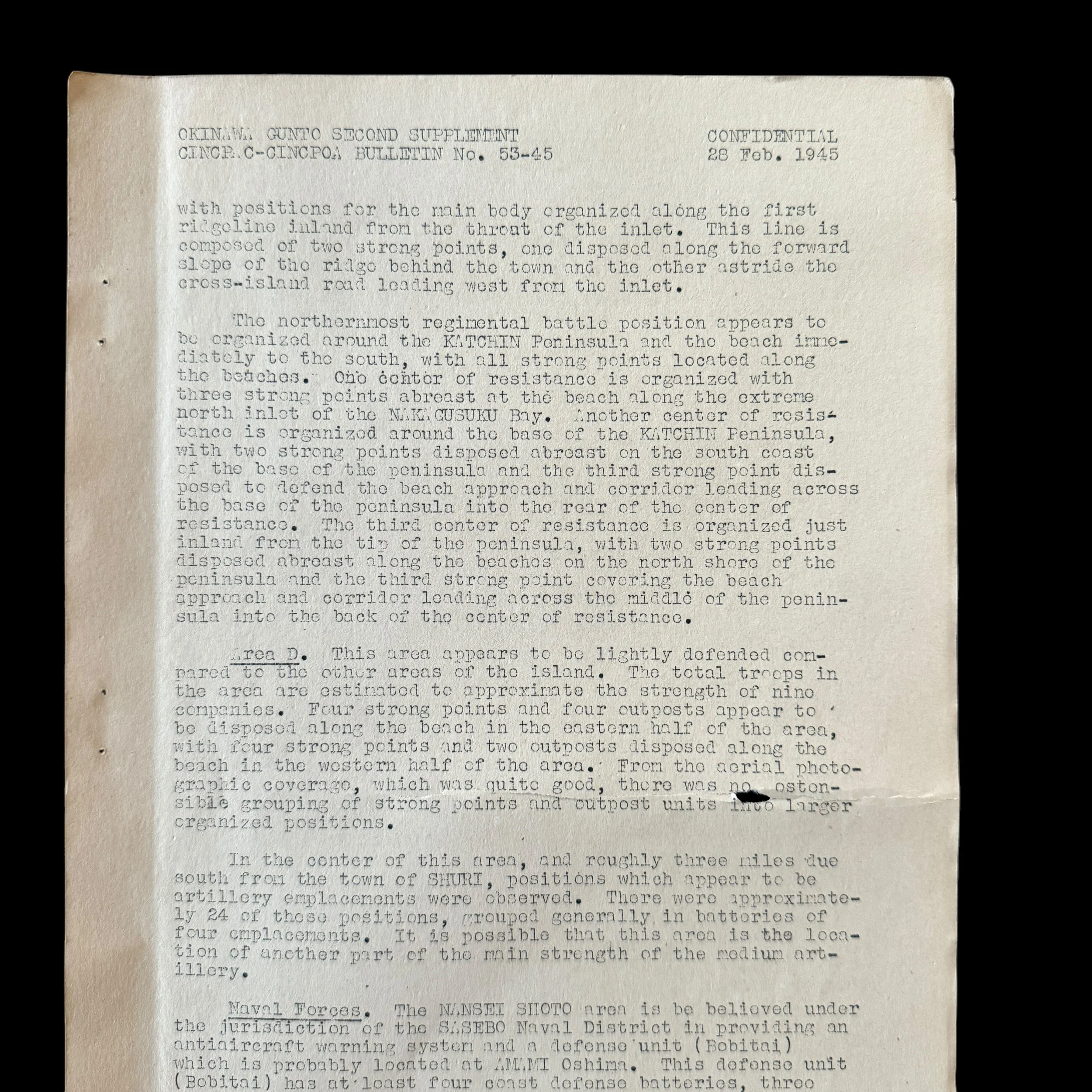
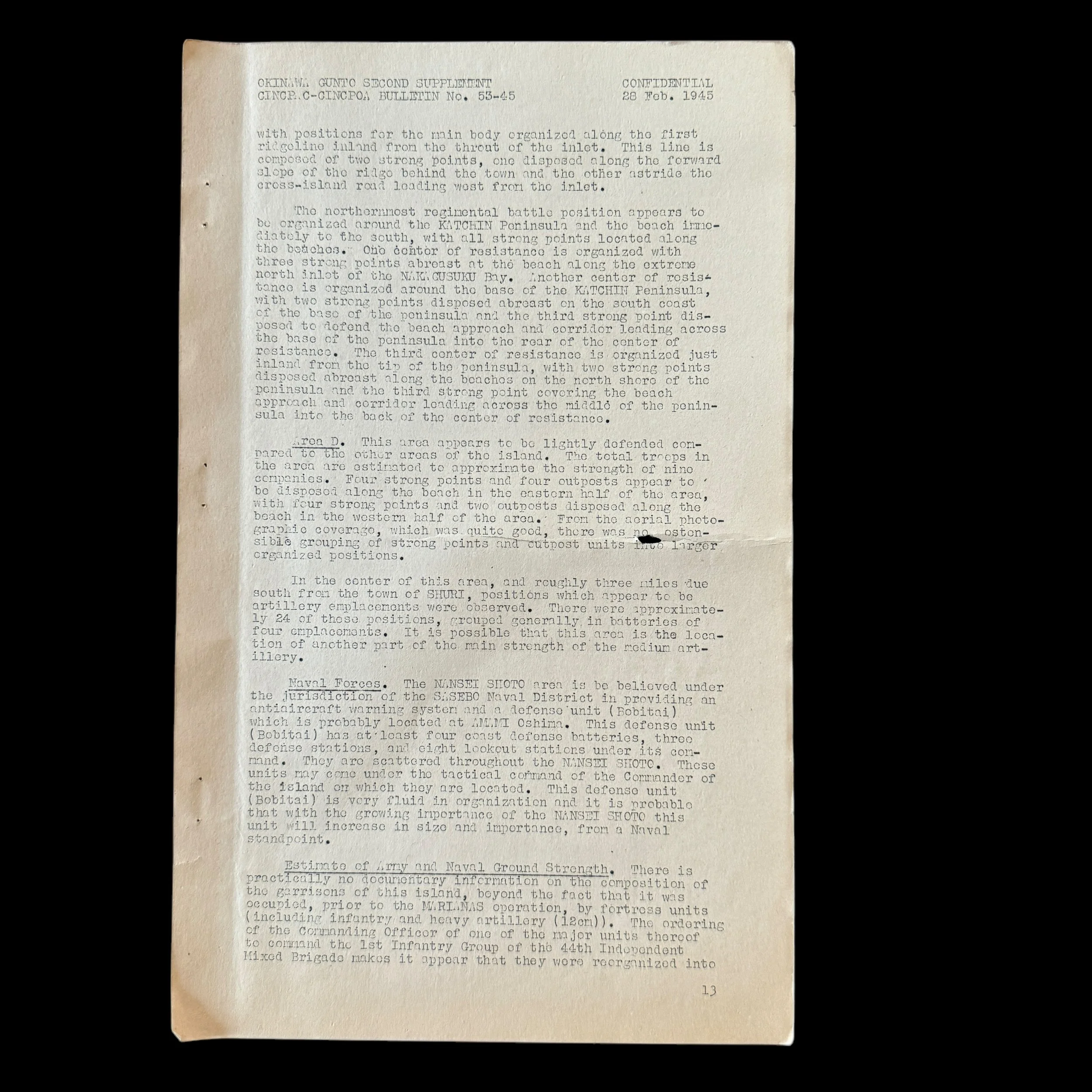
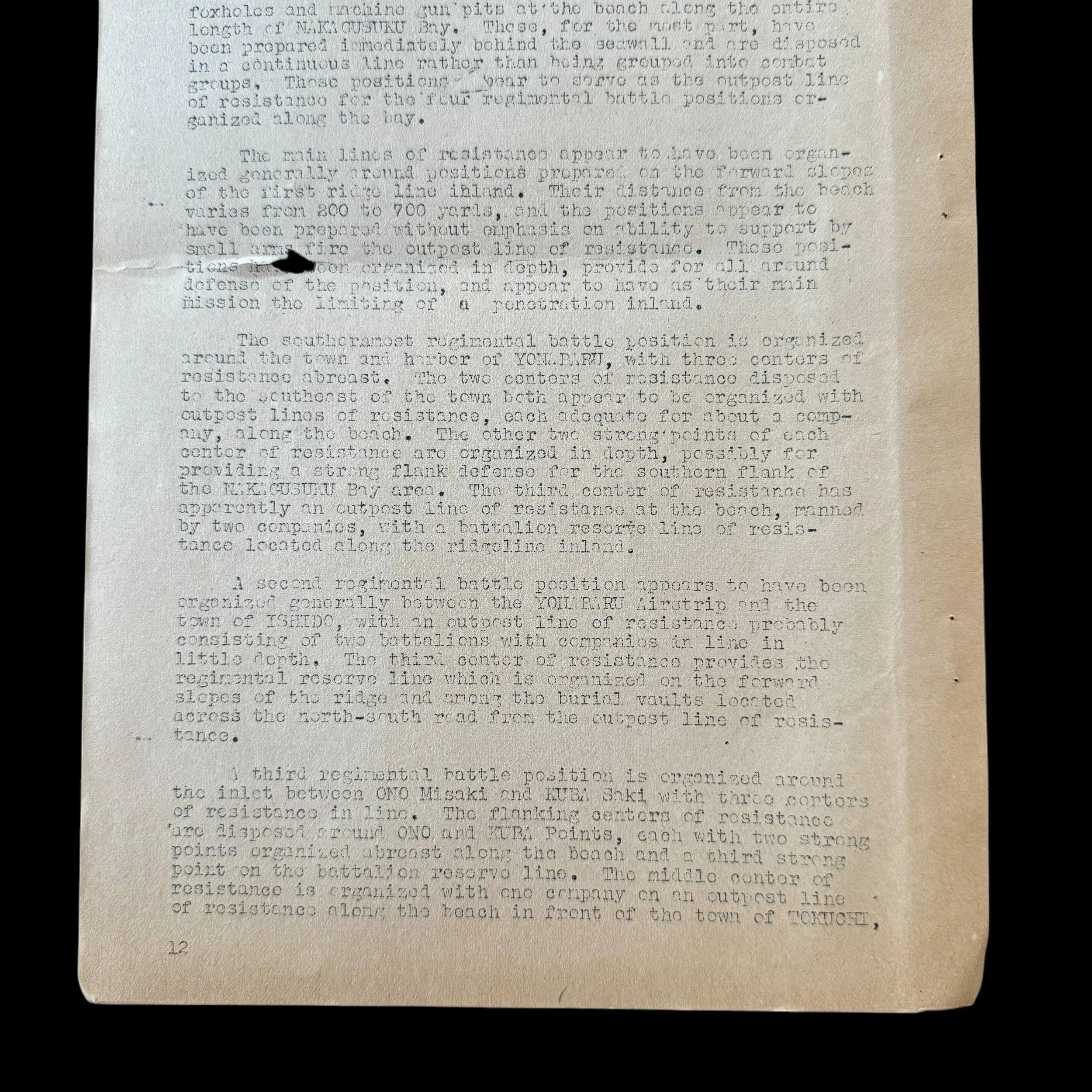
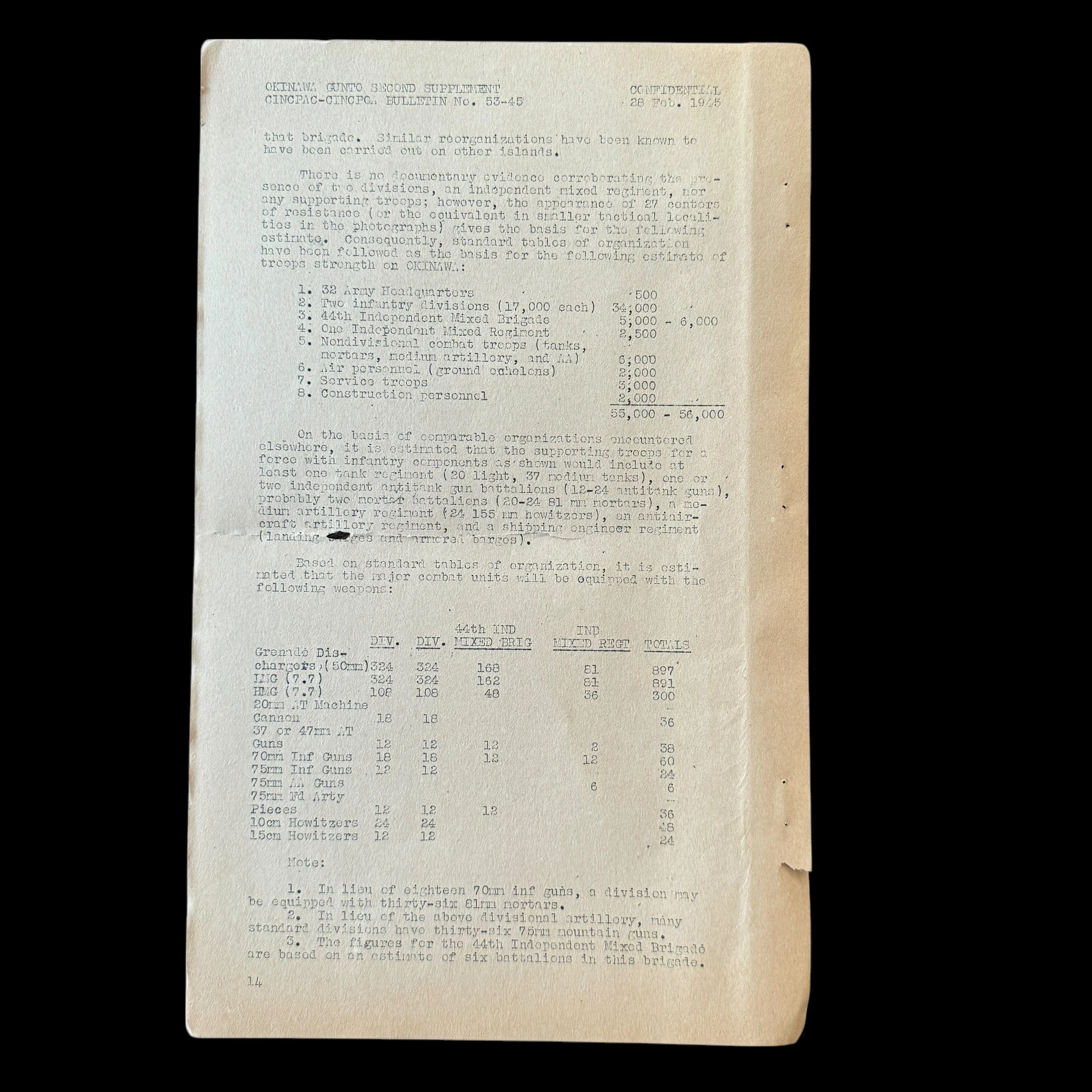

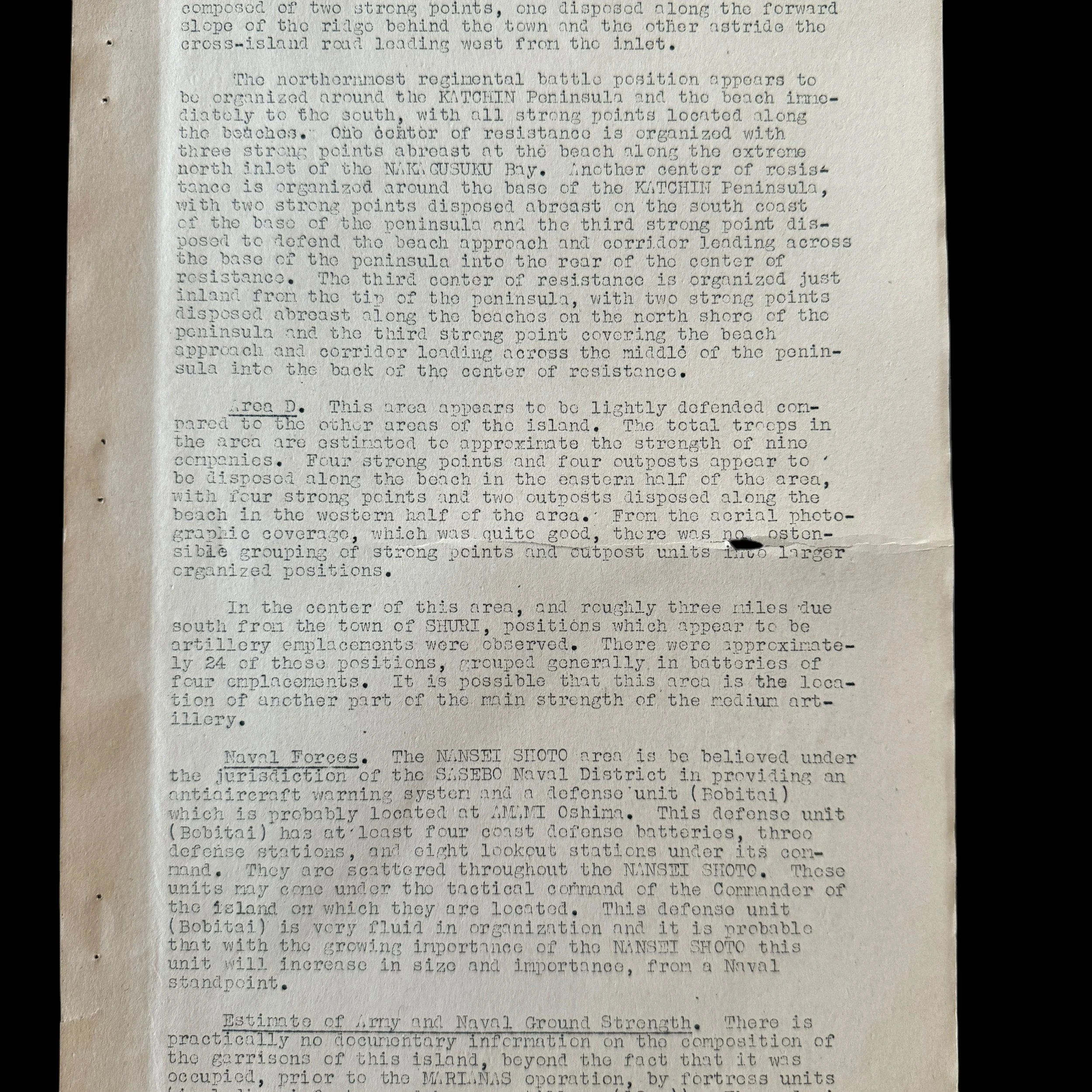

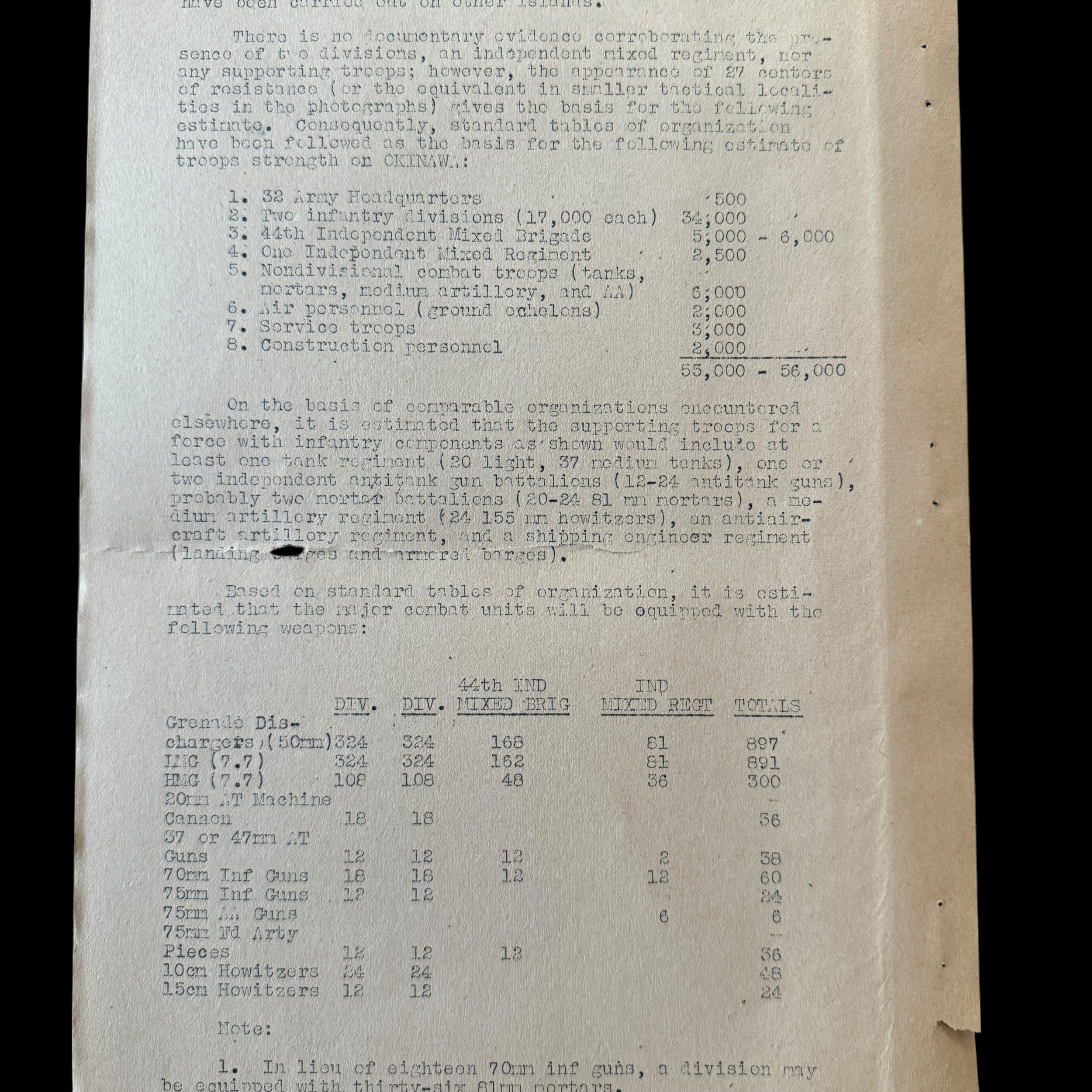
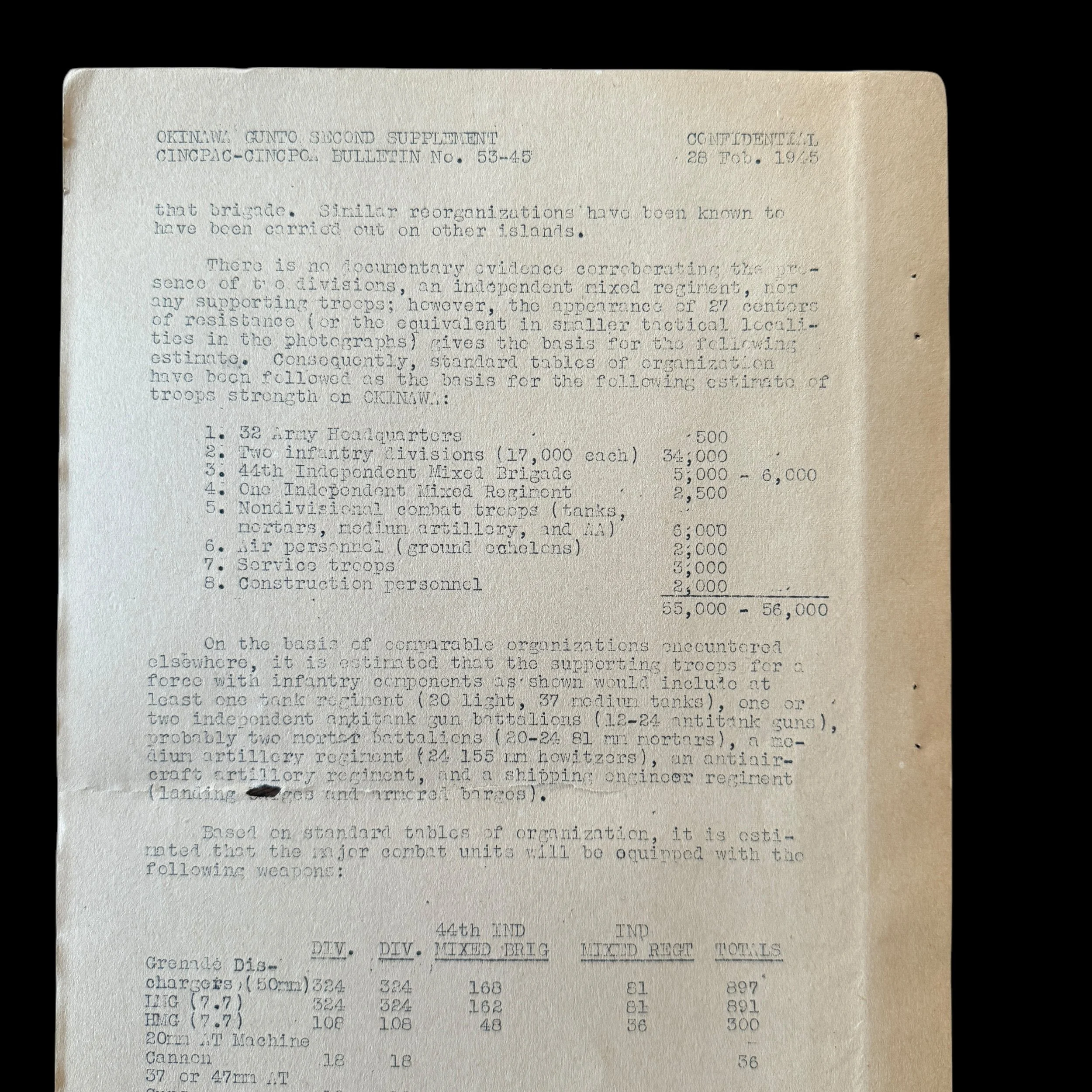
RARE! WWII 1945 Original World War II “Headquarters of the Commander in Chief - U.S. Pacific Fleet” CONFIDENTIAL Operation Iceberg Okinawa Gunto Invasion Bulletin (Japanese Army and Navy Forces)
Comes with hand-signed C.O.A. and a full historical write-up
Type: Original World War II “Headquarters of the Commander in Chief - U.S. Pacific Fleet” CONFIDENTIAL Operation Iceberg Okinawa Gunto Invasion Bulletin
Subject: Description of Defense Areas, Naval Forces, Estimate of Army and Naval Ground Strength
Campaign: Pacific Theater
Dated: Feb. 1945
Pages: 2 (double-sided) - 4 Total
This rare, museum-grade World War II artifact is an original"Headquarters of the Commander in Chief - U.S. Pacific Fleet" CONFIDENTIAL Operation Iceberg Okinawa Gunto Invasion Bulletin.Produced in extremely limited numbers—fewer than 500 copies produced in 1945—these highly classified bulletins were reserved exclusively for the highest-ranking generals, officers, and intelligence officials directly involved in planning and executing the Okinawa campaign in April 1945.
Operation Iceberg, the largest amphibious assault in the Pacific Theater, required an unprecedented level of preparation and intelligence gathering. This invasion bulletin exemplifies the meticulous planning that defined the campaign, containing detailed intelligence on Japanese defensive positions and the expected strategy for Okinawa and nearby Ie Shima. It provides in-depth analysis of troop deployments, fortifications, and the anticipated challenges posed by the formidable Japanese defense strategy.
The bulletin underscores the gravity of the operation, as Okinawa was strategically critical for its proximity to the Japanese mainland. This document served as a cornerstone for the Allied effort, guiding military leaders in orchestrating the assault, which would become one of the bloodiest and most consequential battles of World War II.
Today, this artifact stands as a testament to the complexity and scale of wartime planning, offering a rare glimpse into the intelligence and strategy that shaped one of the most pivotal moments of the Pacific campaign. Its historical significance and rarity make it a treasured piece of World War II history, capturing the monumental effort behind the Allied push toward victory.
The Battle of Okinawa: Description of Defense Areas, Japanese Naval Forces, and Estimate of Japanese Army and Naval Ground Strength
The Battle of Okinawa, codenamed Operation Iceberg, was the largest amphibious assault in the Pacific Theater during World War II, fought from April 1 to June 22, 1945. This critical campaign was part of the Allied plan to capture strategic islands as staging areas for the eventual invasion of Japan. The island's proximity to the Japanese mainland, just 340 miles, made it a pivotal target for the United States. However, the Japanese military, fully aware of Okinawa's importance, transformed the island into a fortress with layered defenses, a formidable naval presence, and a significant commitment of ground forces. This essay examines the description of Okinawa’s defense areas, the role of Japanese naval forces, and the estimated strength of Japanese Army and Naval ground units, which collectively defined the intensity of the battle.
Description of Defense Areas
The Japanese defense strategy on Okinawa was carefully designed to maximize the island's natural terrain while conserving manpower and resources for a prolonged battle of attrition. The defenses were divided into distinct zones, each serving a specific tactical purpose.
1. Northern Defense Area
The northern part of Okinawa, dominated by rugged mountains and dense forests, was relatively lightly defended compared to the central and southern areas. Japanese forces stationed here were minimal, consisting of small garrisons and outposts, primarily tasked with delaying Allied advances. The Yae-Take Defense Line, established in the northern region, was manned by remnants of the 44th Independent Mixed Brigade. The rough terrain provided natural obstacles but lacked the extensive fortifications seen elsewhere on the island. The Japanese anticipated that the Allies would focus their primary efforts in the south, and thus chose to commit fewer resources to the north.
2. Central Defense Area
The central region served as a transition zone, where Japanese forces utilized the terrain to stage minor defensive actions and harass advancing Allied troops. While not as heavily fortified as the southern defenses, this area contained strategic high points and chokepoints that allowed the Japanese to slow Allied progress and prepare for a decisive confrontation further south.
3. Southern Defense Area
The southern part of Okinawa was the heart of the Japanese defensive effort and home to the Shuri Line, a network of fortifications centered around Shuri Castle. This area was divided into multiple defensive lines, each carefully designed to resist Allied assaults:
Outer Defense Line: Located just north of the Shuri Line, this initial line of resistance aimed to delay and weaken advancing Allied forces before they reached the primary defenses.
Main Defense Line (Shuri Line): The Shuri Line was a masterpiece of defensive engineering. It included interconnected caves, tunnels, pillboxes, and artillery emplacements. These fortifications were designed to withstand heavy bombardment and allowed Japanese forces to move troops and supplies securely.
Inner Defense Line: As the final fallback position, this line was located in the southernmost part of the island, where Japanese forces intended to make their last stand.
4. Ie Shima
Located northwest of Okinawa, Ie Shima (also known as Ie Island) held strategic value due to its airfields. Japanese forces here were relatively small, consisting of about 5,000 troops, including elements of the 3rd Special Base Force and local militia. The defenses included entrenched positions and anti-aircraft installations, but the island’s flat terrain made it less defensible compared to Okinawa.
Japanese Naval Forces
Although the Battle of Okinawa was primarily a land engagement, the Japanese Navy played a significant role, most notably through the deployment of the Yamato, the world’s largest battleship. The Japanese Naval strategy was largely shaped by desperation and an understanding of their dwindling resources.
1. Operation Ten-Go
Operation Ten-Go was a last-ditch Japanese naval operation aimed at disrupting the Allied invasion of Okinawa. The centerpiece of this plan was the battleship Yamato, escorted by a small flotilla of cruisers and destroyers. The Yamato’s mission was to sail to Okinawa and provide fire support for Japanese ground forces, sacrificing itself in the process. However, this plan was doomed from the start due to overwhelming Allied air superiority. On April 7, 1945, the Yamato and most of its escorts were sunk by waves of U.S. carrier-based aircraft before they could reach Okinawa.
2. Naval Air Forces
The Japanese Navy also contributed through its air forces, employing kamikaze tactics in an unprecedented scale. Waves of suicide planes targeted Allied ships, aiming to sink transport and support vessels critical to the invasion. Kamikaze missions inflicted significant damage on the Allied fleet, including the sinking of destroyers and the damage of larger ships like aircraft carriers.
Estimate of Japanese Army and Naval Ground Strength
The Japanese ground forces on Okinawa were commanded by General Mitsuru Ushijima, who led the 32nd Army. The composition of Japanese forces on Okinawa reflected their strategic shift toward defensive attrition rather than offensive operations.
1. Army Ground Strength
32nd Army Personnel: The core of the Japanese defense was composed of approximately 77,000 soldiers from the 32nd Army. This included:
24th Division: A well-trained infantry division responsible for manning key positions along the Shuri Line.
62nd Division: Another major infantry division, tasked with defending the southern defensive zones.
44th Independent Mixed Brigade: Deployed in the northern regions and tasked with delaying Allied advances.
27th Tank Regiment: Equipped with light tanks, this unit was deployed in support of the Shuri Line defenses, although its effectiveness was limited by terrain and Allied air superiority.
2. Naval Ground Strength
The Japanese Naval ground forces, numbering approximately 20,000 personnel, included units such as:
Special Naval Landing Forces (SNLF): Japan’s equivalent of the U.S. Marines, these troops were deployed in critical defensive positions, particularly around coastal areas.
3rd Special Base Force: Stationed on Ie Shima and tasked with defending its airfields and coastal installations.
3. Auxiliary and Militia Forces
In addition to regular army and naval troops, the Japanese employed 20,000–40,000 Okinawan conscripts and militia.These individuals were often poorly trained and equipped but were utilized for labor, logistical support, and even combat roles. Tragically, many civilians were coerced into fighting or used as human shields, reflecting Japan’s total-war approach.